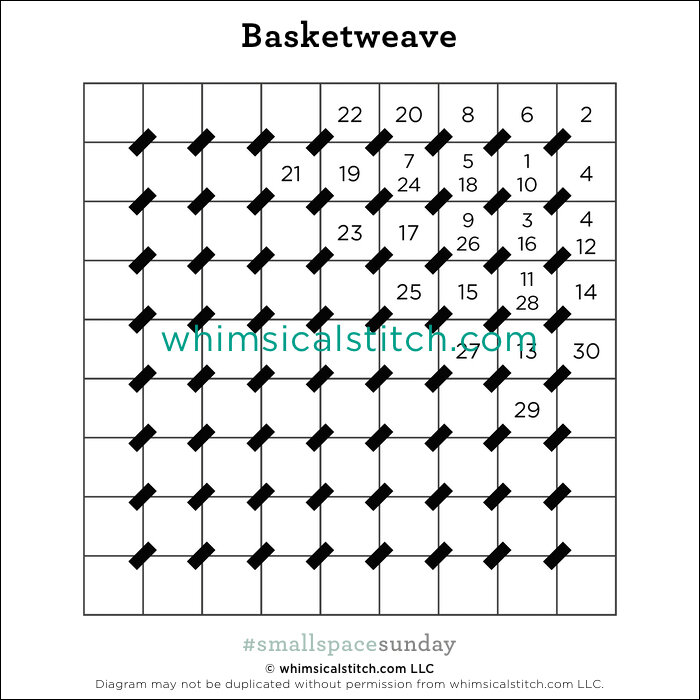I created* today's stitch for a beginning student. It was a great way give the student practice with the Continental stitch, stretch them a little bit with an easy decorative stitch, and add an element of style to the piece. Win, win, win!
The student used this stitch for the background of a cute little animal. You could add a Rhodes square in the 3X3 intersection for a smoother corner. The stitched sample is a background on a Scott Church Creative piece (in progress). It includes DMC Perle Cotton, Flair, and Trebizond Silk. This stitch is wide open. Use that openness to exploit beautiful canvas painting. This stitch could help define a grassy area or help highlight the painting in a beautifully shaded tablecloth. Don't be afraid to use a contrasting color for any of the threads. Have fun with thread finishes and color!
This stitch diagram, along with all other #whimsicalwednesday and #smallspacesunday stitch diagrams, can also be found on a Pinterest board here.
Be sure to follow whimsicalstitch.com on Facebook, Pinterest, Instagram, and Twitter.
If you like what you see on this blog, want to learn some very creative decorative stitches, and how to put them all together, whimsicalstitch.com sells stitch guides and stitch concepts for Melissa Shirley Designs, Zecca Designs, and Patience Brewster. 47 guides are currently available, including the brand new Decisions, Decisions, Passion Flowers and Royal Peeps, and more are in the pipeline.
I hope you have the perfect spot for this stitch! Enjoy!
* Note on "creating:" This stitch may very well exist in a book or on another site. I can't pretend that I'm the first person to think of any stitches I share with you. I say "I created it" because I haven't stumbled across this stitch anywhere.









